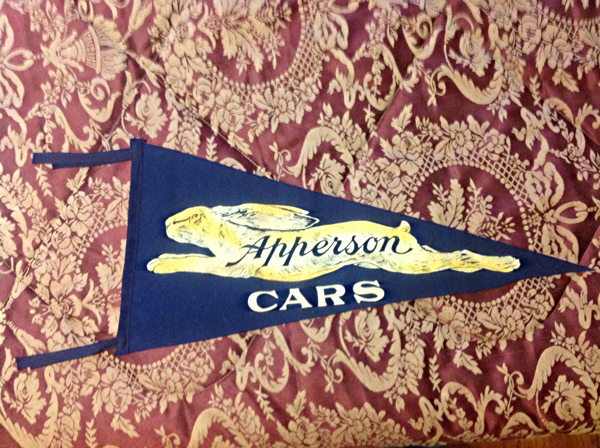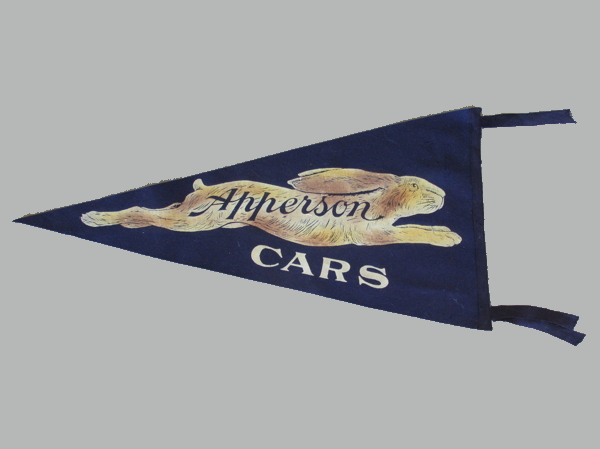Wooldridge's
I am always looking for any information or parts for 1914 Apperson Jackrabbit.
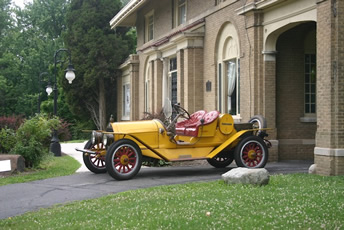 |
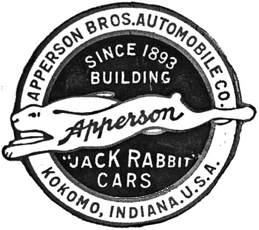 |
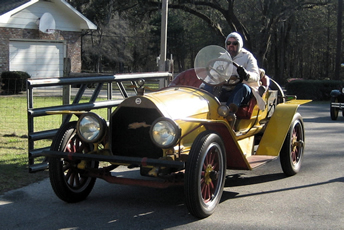 |
I can not thank Tim & Karen Pederson (Baum) and Curt Wells and their families enough for the information they have provided. It is my honor to keep the Apperson alive and running after 100 years. If not for Grampa Wells and Irol Wells and Lawrence Baum and now my family a rare auto might have been lost.
Kokomo is having a Haynes-Apperson Reunion September 5-10 of this year so I have decided to go back to Kokomo and attend. May never get to see that many Haynes and Apperson together again.
I got new very detailed pictures from Tom showing the rebuild process at the shop. The camshafts are being sent back from the shop that rebuilt them. Now they can start putting the engine back together. I hope within the next month or so to have it back.
I also got pictures of a project Tim had done for Karen. He found a Model T ride and had it remade to look like the Apperson. It turned out fantastic and looks just the Apperson. I can't wait to take pictures of the Apperson the ride.
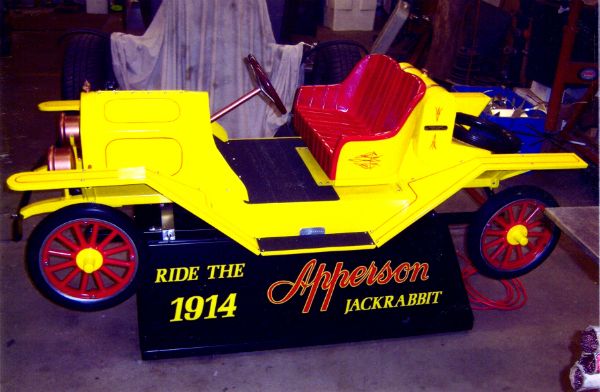
I purchased this pennant off eBay. It is only the second one I have seen. Probably should not have bought it but it is very rare and will look great on display with my other Apperson items.
Turns out that the person that had the Apperson pennant also had a second one. My friend and fellow Apperson fan Tim Pederson bought it.
This is only the third one I have seen and now Tim and I own two of them.
The pennant is the opposite of the one I got. I think that was so they could be put on poles on each side of the Apperson dealer display.
Turns out that the person that had the Apperson pennant also had a second one. My friend and fellow Apperson fan Tim Pederson bought it.
This is only the third one I have seen and now Tim and I own two of them.
The pennant is the opposite of the one I got. I think that was so they could be put on poles on each side of the Apperson dealer display.
The Apperson car was produced from 1902 to 1926 by the Apperson Brothers Automobile Company, which was located in Kokomo, Indiana. Apperson Brothers was founded by two brothers, Elmer and Edgar Apperson. They had worked with Elwood Haynes previously under a partnership company called Haynes-Apperson Automobile Company, and they even built one of America's first automobiles, which was designed by Haynes.
The Apperson was first available with a flat-twin engine that was mounted in the front. The flat-twin used two cylinders, each of which were located on opposite sides of the crankshaft. It was an internal combustion engine and has been known for its use in the BMW motorcycle since 1923. As a BMW motorcycle engine, it is called the "Boxer." It was used in automobiles because it is easily adaptable to forced air-cooling. The next engine used for the Apperson was a flat-four, or four-cylinder engine, with the cylinders arranged in a flat configuration. This was also called a "horizontal four" engine. It's called a boxer engine as well. Boxer engines were so popular in early automobiles because they were better balanced than other four-cylinder engines. The Apperson was then available as two models, each having a vertical four engine. The vertical four engine, also called a straight-four or inline-four, was an internal combustion engine featuring four cylinders, which were aligned in one row. This type of engine was used in most cars with a 2.4-liter displacement.
Apperson Brothers started producing the Apperson Touring Car in 1904. It came with a tonneau, which allowed for up to six passengers. The retail price of this car was about $6,000. It had a vertical-mounted straight-four engine, which was installed in the front of the car. The engine could produce 40 horsepower, and it had a four-speed transmission. The car's frame was built of steel and weighed 2,800 pounds. Other features included electric lights and a modern-day cellular radiator. A 25-horsepower version of the Touring Car was offered at a retail price of $3,500. It weighed in at 1,800 pounds.
Apperson Brothers had a love for speed, power, and the races. The company unleashed a 95-horsepower four-cylinder engine in 1906 that was priced at a whopping $10,500. The following year, the company released its famous Apperson Jackrabbit speedsters. These had 60 horsepower and sold for $5,000. The whole model line was referred to as "Jackrabbit" for a while, with several models to fit the buyer's needs. There were the 32.4-horsepower four-cylinder model and the 33.7-horsepower six-cylinder model listed for 1913. In 1914, a 33.8-horsepower, V-8 (90-degree) engine model was released. The V-8 had a displacement of 335 cubic inches, and it was called the Apperson 8. One distinguishing feature that really stood out on the Jackrabbit models was the jackrabbit emblem on the front grille area of the car.
The Apperson 8 was marketed in 1919 and 1920 as the "Eight with Eighty Less Parts." The reason Apperson Brothers could boast this was because the "Eight" engine that was used in Apperson cars literally had 80 less parts than other Eight engines. For example, there was only one cam shaft and only two cam gears meshed direct. The chain had been eliminated. The fours were merged into one at the base. These eliminations resulted in Four engine economy for an amazing, yet simple, Eight engine. The Eight engine could zoom from 1 to 40 mph in only 40 seconds, and the car was well balanced for its day.
The Apperson Roadplane six and eight engines were released in 1916. The name Roadplane was used as a marketing concept for roadsters instead of an actual model name. The concept was developed by Elmer Apperson, and the name Roadplane was used for the "Touring" car and the "Chummy Roadster." In 1917, the Silver-Apperson was released. Its design was by Conover T. Silver. The name of this model was changed to Anniversary in 1919. In 1923, Apperson Brothers offered a proprietary six engine with 3.2 liters and a displacement of 197 cubic inches. Then in 1924, the company offered the Lycoming eight engine. Lycoming was a popular aviation engine manufacturer, but the company focused mainly on automobile engines during the early post-WWI period. Apperson introduced four-wheel brakes for 1926 models before the company's plants shut down.
Apperson Brothers had a passion for races and entered every time they got a chance. One of the famed Apperson drivers, Herbert Lytle, had been the star driver of the Pope-Toledo racing cars for several years, but resigned this position to drive for Apperson Brothers in 1908. Lytle started out driving an Apperson in the Savannah stock car races in March 1908. He drove the Apperson Runabout in the Savannah 180-mile Runabout Races and won. Lytle had driven in two Vanderbilt Cup races before and was very well known in his day. The Apperson was entered into the 1911 Indianapolis 500-Mile Race and was driven by Herbert Lytle, but Lytle didn't finish this race. Other Apperson drivers were Harris Hanshue, Hugh Harding, Sterling Price, Nick Nichols, Frank Goode, Swan Ostewig, Joe Seymour, and William McCulla. Though Apperson Brothers Automobile Company folded in 1926, memories of the company and its great Apperson models are still alive among classic car enthusiasts today.
